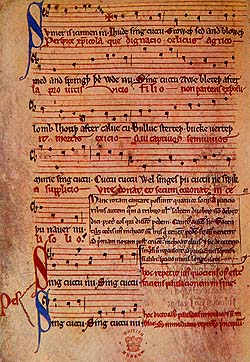 |
 |
|||
|
Reading Abbey’s library was large and important. There exists a catalogue made in the thirteenth century of some 228 volumes. Quite a large number of these have been preserved in our public libraries. Dr. J.B. Hurry, in his excellent work, “Reading Abbey” (1901), lists of over sixty, but it could be considerably increased. Probably the most famous of Reading books is one in the British Museum (Harley MS. 978) of the first half of the thirteenth century, in which the famous and beautiful "endless canon," Sumer is icumen in, is preserved. A noteworthy fact is that during the last seven years of the fifteenth century a Greek scribe, Joannes Serbopoulos, was resident in the monastery and employed in transcribing Greek manuscripts, several of which, in his unmistakable and ugly hand, still exist at Oxford and Cambridge. In a Lambeth manuscript that belonged to Reading (No. 371), there are notices of an image of great sanctity, of the Child Jesus, at Reading Abbey which was given to Henry I by the Duke of Aquitaine. "Before it every one who prostrates himself in its chapel always obtains by the grace of God the fulfilment of his devout prayer in any trouble." It was called the Child of Grace. In the same book are some verses which show that there was an important set of pictures or images of Apostles and Prophets in the church. The relic principally venerated at Reading Abbey was, however, always the hand of St. James the Great. By a curious chance, this seems to have survived. It was found concealed in the ruined church wall, in 1786, and is now preserved in the Roman Catholic Church at Great Marlow. Edited from MR James' "Abbeys" (1925)
|
|||
| © Nash Ford Publishing 2001. All Rights Reserved. | ||||





 Reading
Abbey
Reading
Abbey